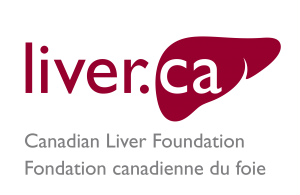Type 1 Glycogen Storage Disease
Type 1 Glycogen Storage Disease
Glycogen storage disease has been divided into at least 10 different types based on the deficiency of a particular enzyme which controls blood sugar levels. Type I glycogen storage disease is a deficiency of the enzyme glucose-6-phosphatase which helps in maintaining a normal blood glucose level (sugar concentration) during fasting.
Symptoms
Patients with this particular disorder show a large number of abnormalities which exhibit themselves in growth failure, a greatly enlarged liver, and a distended (swollen) abdomen.
Diagnosis
The abnormal blood chemical condition is indicated by a low blood sugar concentration and higher than normal levels of lipids and uric acid.
Treatment
In the past, these patients have been treated by frequent feedings during the daytime and occasional feedings during the normal sleeping hours which required waking the patient. This was the accepted form of therapy until 1967, but the patients continued to show various difficulties in physical development and blood chemistry.
Starting in 1967, surgeons began performing a surgical procedure, called a portacaval shunt, which bypassed the blood around the liver. In some patients this procedure resulted in improvement in observable physical conditions and improved biochemical levels in the blood. In 1974, it was found that patients also did exceedingly well if the blood glucose level was maintained within the normal range by frequent daytime feedings and by continuous infusion of a solution high in glucose concentration into the stomach during the night. Maintenance of the blood glucose level either in total intravenous feedings or by continuous infusion of high glucose-containing foods into the stomach could reverse all of the physical and chemical signs of this disease.
A practical management technique for maintaining the blood glucose level has been devised in which a naso-gastric tube is inserted into the stomach each evening through which a solution containing a high concentration of glucose is infused to maintain the blood sugar level between 75 and 120. In the daytime, the tube is removed and the patient eats a high starch diet approximately every 2 1/2 to 3 1/2 hours. Using this technique, most of the physical and biochemical abnormalities are completely reversed. Although younger children will have to use the tube each evening, doctors feel that this may not be necessary past puberty.
Liver transplantation has also become an effective therapy for some patients with glycogen storage disease.
Support
National Help Line:
This support resource gives you and your loved one somewhere to turn for answers after diagnosis, helps you understand your disease, and provides you with the resources you need. You can call 1 (800) 563-5483 Monday to Friday from 9 AM to 5 PM EST.
The Peer Support Network:
This is a national network of people living with liver disease that have offered to share their experiences with others. It was developed by the Canadian Liver Foundation as a means to link Canadians like you who have a family member who has liver disease, who care for someone who suffers from liver disease, or who have been diagnosed with a liver disease, to talk about your concerns with a peer in a similar situation.
If you would like to be connected with a peer supporter in your area, or would like to join the peer support network, please call the National Help Line at 1 (800) 563-5483 Monday to Friday from 9 AM to 5 PM EST or email us.
Help us help you!
If you are not satisfied with the information you just read or any information on our website, please take a moment to send us your comments and suggestions on the type of content you would like to find on liver.ca. Please include the page you are commenting about in the subject line of your email.



